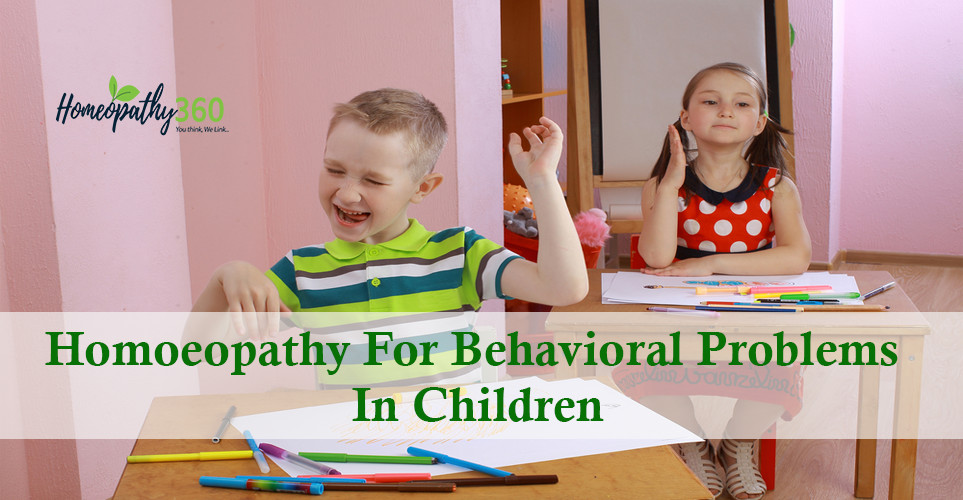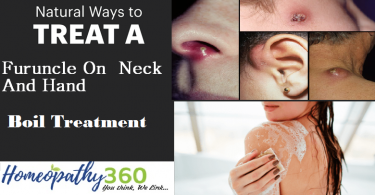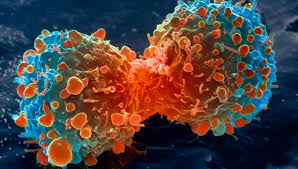
Abstract
Behavioural disorders are one of the most concerning disorders of children for parents and teachers. They include ADHD, ODD and Conduct Disorder. There are various factors that can cause these disorders, like genetic, environmental, neuro-biological, and developmental are some to mention. Even though the symptoms of these disorders seem to be similar they differ in their main core. Homoeopathy has shown wonders in treating pediatric patients and behavioural disorders.
Introduction
Stereotyped or habit behaviors can be defined as repetitive behavior typically outside the attention of the person performing them. These can progress to Stereotypic Movement Disorders, which, as designated by the Diagnostic and Statistical Manual of Mental Disorders, Fifth Edition (DSM-5), are seemingly purposeless yet self-driven motor behaviors that cause functional impairment.[1] Childhood habit behaviors appear in numerous different forms. Many people engage in some degree of habit like behavior in their lifetime. As per Wood Worth, the term “behaviour” refers to all motor or conative actions, such as swimming or dancing, cognitive activities, such as thinking, reasoning, and visualizing, and affective behaviours, such as feeling joyful, sad, or furious. The operations of the human mind and conscious, subconscious, and unconscious behaviour are also included [2]. Behaviour disorders are defined as any disturbance in these regular conative, cognitive, or emotional processes.
Typical behavioral issues in children include:
1. ADHD.
2. Disruptive behaviour and dissocial disorder.
i. Oppositional defiant disorder.
ii. Conduct disorder.
Epidemiology:
United States and international statistics
Accurate prevalence figures for childhood habits are extremely difficult to estimate, because of the various classes of habits and the differing topographies of a child’s presenting habit. Data on the prevalence of stereotypies are limited, especially internationally, and tend to vary according to the exact definition used by the researchers. Nevertheless, habits or common stereotypies are thought to occur in as many as two thirds of infants and in 20-50% of children overall. [3]
Thumb and hand sucking are seen in 17-59% of children younger than 15 years. Thumb sucking is common in infancy and in as many as 25-50% of 2-year-old children; however, it is observed in only 15-20% of 5- to 6-year-old children. Nail biting is mainly observed from preschool age to adolescence and is the most common stereotypy in school-age children and college students. The prevalence is as high as 45%-60%; in one study, it was found to exceed 60% in a group of 8-year-olds.
Breath-holding spells are common in as many as 4-5% of children younger than 8 years.
Etiology
Although the origins of most habit disorders are not well established or understood, associated biologic or environmental etiologic factors may exist. Some habit behaviors emerge from normal repetitive behaviors in infancy (eg, hand and thumb sucking) and are believed to represent intrinsic movement patterns generated by the developing nervous system. Certain behaviors (eg, nose picking, which may initially arise as a response to dry nasal membranes and nasal irritation or itching) can later develop into a cycle that is difficult to break.
Certain genetic syndromes are associated with repetitive behaviors (eg, skin picking in Prader-Willi syndrome, hand flapping in fragile X syndrome).
Genetic factor
Some complex motor stereotypies appear to exhibit mendelian inheritance in animal and human studies. In a study of developmentally normal children, 25% had a family history of stereotypies, and a first-degree relative was affected in 17% of cases.[4] Nearly half of the children had a coexisting behavioral disorder.
To date, no specific genes have been identified. A causative role for the MECP2 gene on the X chromosome has been suggested. Those patients who have a detectable mutation in the gene show a greater number of stereotypies than those without a known mutation.[5]
Pathophysiology
Research on the mechanisms of motor stereotypies has followed two different approaches. Psychogenic hypotheses aim to explain the cause of stereotypies from a behavioral standpoint. Neurobiologic hypotheses look at the structural and molecular basis for stereotypies.
Psychogenic hypothesis
Stereotyped behaviors are known to occur in animals, especially those that are caged or restrained. One hypothesis is that such animals experience a lack of external stimuli, and the stereotypic movements help maintain their state of arousal. In support of this view, stereotypies are more common in children with sensory deprivation due to blindness or deafness and in conditions where there is less interaction with the external environment (eg, autism).[6]
Neurobiological hypothesis
Anatomically, the basal ganglia are implicated in stereotypic disorders. In humans, case reports of stereotyped movements have spontaneously emerged after lesions of the putamen, orbitofrontal cortex, or thalamus. A volumetric magnetic resonance imaging (MRI) study in children with complex motor stereotypies demonstrated a reduction in the size of the caudate nuclei and also in frontal white matter.
Sign & symptoms
The history consists of reports of observed stereotyped or habitual behavior in the individual. Common childhood stereotypies include the following:
Thumb or hand sucking
Hair twirling
Nose picking
Cuticle picking
Body rocking
Foot tapping
Head banging
Teeth grinding (bruxism)
Breath holding
Self-biting
Self-hitting
Object biting
Compulsive scratching
Additional atypical stereotypies or complex motor movements include:[7]
Head nodding
Atypical gazing at objects or fingers (secondary stereotypies described in children with autism)
Diagnosis
Problems to be considered include the following:
Autism spectrum disorders
Childhood disintegrative disorder
Obsessive-compulsive disorder
Pervasive developmental disorder
Schizophrenia
Status epilepticus
Trichotillomania
Bobbing head doll syndrome
central nervous system (CNS) disease
Congenital blindness or deafness
Developmentally appropriate self-stimulatory behaviors in young children
Environmentally based sensory deprivation
Factitious disorder with predominately physical signs and symptoms
Mannerisms
Myoclonus
Neglect
Neurologically based movement disorder (eg, chorea, dystonic movements, athetosis, myoclonus, hemiballismus, or spasms)
Seizure disorder
Self-mutilation associated with certain psychotic disorders and personality disorders
Self-stimulatory behaviors in individuals with hearing impairment or other sensory deficits.
Diagnostic criteria (DSM-5)
The specific DSM-5 criteria for stereotypic movement disorder are as follows:[1]
Repetitive, seemingly driven, and apparently purposeless motor behavior (eg, hand shaking or waving, body rocking, head banging, self-biting, or hitting one’s own body)
The repetitive motor behavior interferes with social, academic, or other activities and may result in self-injury
Onset is in the early developmental period
by another neurodevelopmental or mental disorder (eg, trichotillomania or obsessive-compulsive disorder)
Management
Childhood habits that do not interfere with everyday functioning often require no treatment. However, those that cause substantial distress, social isolation, or physical injury may warrant a therapeutic intervention. Treatments may include the following:
Physical measures (eg, helmets, dental occlusion splints)
Behavioral therapy (mainstay of treatment)
Effective behavioral therapies for habits include the following:-
Relaxation training
Self-monitoring
Nocturnal biofeedback (for bruxism)
Competing responses
Use of bitter-tasting substances (for nail biting)
Use of aversive-tasting substances (for thumb sucking)
Homoeopathic point of view
The homoeopathic perspective looks at behavioural disorders from a bird‟s eye view. The approach includes understanding the child in an evolutionary pattern i.e. the way in which the child has been brought up, its surroundings, its interpersonal interactions and evolving coping mechanisms. The mother‟s history during pregnancy is given prime importance as it has a substantial effect on the constitution of the child in its formative years. To go a step further, one may also enquire about the state of the physical and mental health of the parents during the time of conception. A correlation is established at the end of the history so that the problem is understood from a multidimensional point of view. This further helps establish goals of therapy and criteria for follow up. The choice of homoeopathic remedy is governed by the facts available at the time of the interview. The remedy may thus differ as the child grows.
Homoeopathic therapeutics (8, 9, 10)
Anacardium
Easily angered, up to blows for the least offence.Disposition to become angry and to object. Hopelessness with silly manners, awkwardness Disposition to laugh at serious things and seriousness when there is something to laugh. Impunity, hard-hearted, cad, deprived, perversity, villainy, curses. Disbelieves his own power and discouraged
Chamomilla
Speaks and replies only when he is forced, obstinate to speak a word. Bad moods with complaints of insomnia. Believes to be offended. Tendency to become angry and dispute. Very much choleric and quarrelsome humour. Excessive irritation, extremely sensitive to external impressions. Irritable persons, bad humour, disposed to become very angry, quarrel, wicked children, sensitive to pain. Quarrelsome and angry; tendency to weep and become angry.
Hyoscyamus
The use of hyoscyamus is recommended if the symptoms exhibited by the patient include violent outbursts, impulsiveness, inability to think clearly, excessive talking, fear of being chased by enemies or animals, fear of dark and display of inappropriate gestures. A shortened attention span and inability to focus are common ADHD symptoms in children and adults.
Stramonium
This is one of the most effective homeopathic medication for anxiety in children. It is extremely useful for treating hyperactivity. It might be of great help for children who speak incoherently or talk very fast. It can also provide relief to those who are fearful of darkness. It might also be prescribed if the fear of being abandoned seems to be bothering the sufferer. This medicine might be recommended if the patient displays excessive aggression in the form of kicking, biting, hitting or use of threatening language.
Cina
Cina is generally prescribed for treating fidgeting disorder in children. Cina also helps in improving the attention span. It is generally recommended for children who are very restless at night. It helps the child sleep peacefully throughout the night. It might be recommended for children who don’t obey and exhibit difficult behavior. Besides taking these medicines, following an ADHD diet will also help in alleviating the symptoms of this disorder.
Tuberculinum
Tuberculinum children are often very restless and always bored. They are also defiant, aggressive and destructive (break/tear/cut things). As babies, they may throw their heads on the ground or against the wall when angry. They grind their teeth during sleep.
DISCUSSION & CONCLUSION
School interventions have been deemed successful in the treatment of mental health disorders. With that in mind, it is vital to develop effective care and interventions for school going children. In addition, there is a need for urgent care of children experiencing behavioural difficulties since untreated behavioural problems are associated with huge psychological difficulties at the individual, family and community levels. That‟s why early treatment is so important. Constitutional maintaining the physical and mental well-being. Homoeopathic treatment can help child learn to respond better to their emotions and better shape their communications with you, their teachers, their siblings, and other authority figures.
REFERENCES
- American Psychiatric Association. Diagnostic and Statistical Manual of Mental Disorders, Fifth Edition. 5th Ed. Arlington, VA: American Psychiatric Association; 2013. 357-9.
- Mangal SK. Advanced Educational Psychology. 2nd Ed. New Delhi, India: PHI Learning; c2012. p. 3.
- Tröster H. Prevalence and functions of stereotyped behaviors in nonhandicapped children in residential care. J Abnorm Child Psychol. 1994 Feb. 22(1):79-97.
- Harris KM, Mahone EM, Singer HS. Nonautistic motor stereotypies: clinical features and longitudinal follow-up. Pediatr Neurol. 2008 Apr. 38(4):267-72.
- Temudo T, Oliveira P, Santos M, Dias K, Vieira J, Moreira A, et al. Stereotypies in Rett syndrome: analysis of 83 patients with and without detected MECP2 mutations. Neurology. 2007 Apr 10. 68(15):1183-7.
- Zentall SS, Zentall TR. Optimal stimulation: a model of disordered activity and performance in normal and deviant children. Psychol Bull. 1983 Nov. 94(3):446-71.
- Kates WR, Lanham DC, Singer HS. Frontal white matter reductions in healthy males with complex stereotypies. Pediatr Neurol. 2005 Feb. 32(2):109-12.
- Allen H.C. Allen’s Keynotes, Rearranged and Classified with leading remedies of the Materia Medica & Bowel Nosodes, 9 edition, B. Jain Publisher Pvt. Ltd., New Delhi, Reprint edition 2004.
- Boericke W. Boericke’s New Manual of Homoeopathic Materia Medica with Repertory: Third, Revised & Augmented Edition based on Ninth Edition. New Delhi: B. Jain Publishers 2010.
- Clarke, John Henry, M.D. Condensed Homoeopathic Materia Medica & Repertory, Revised Edition-2001, B. jain publishers (p) ltd, 1921/10,Chuna Mandi, Paharganj, New Delhi(India).




